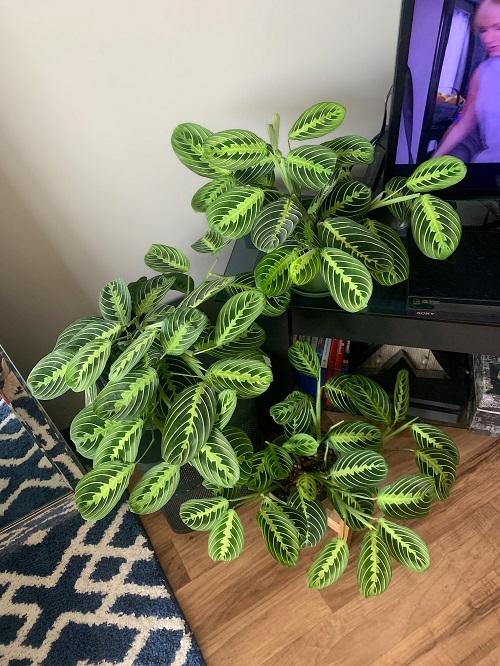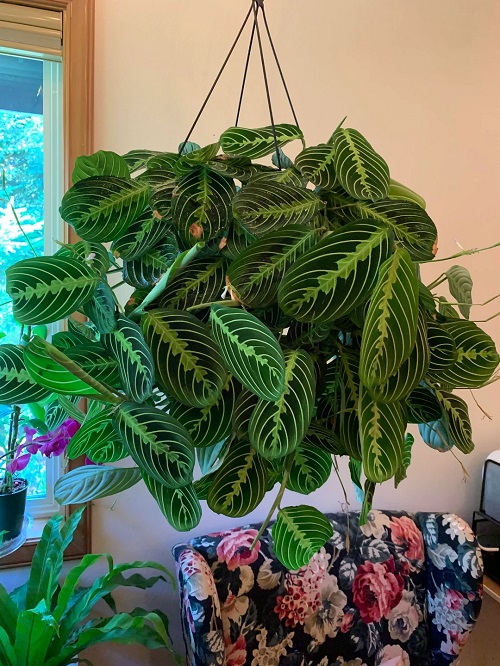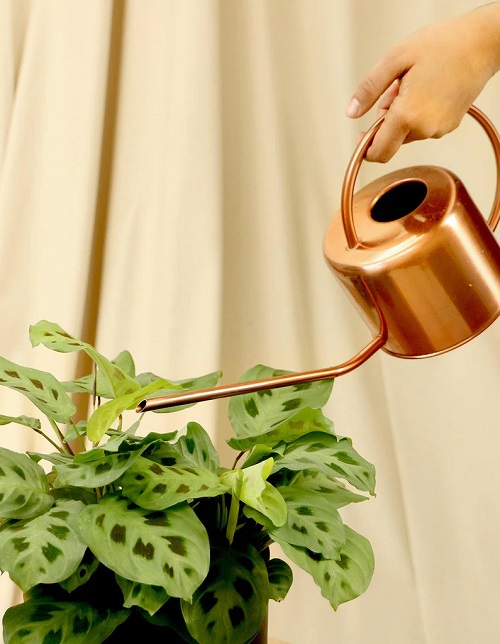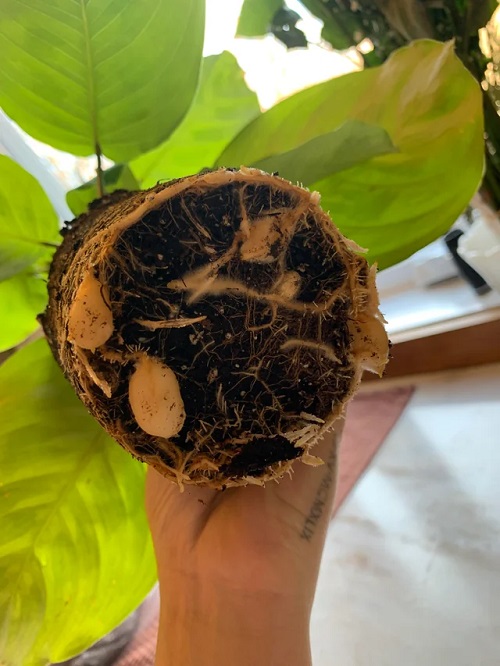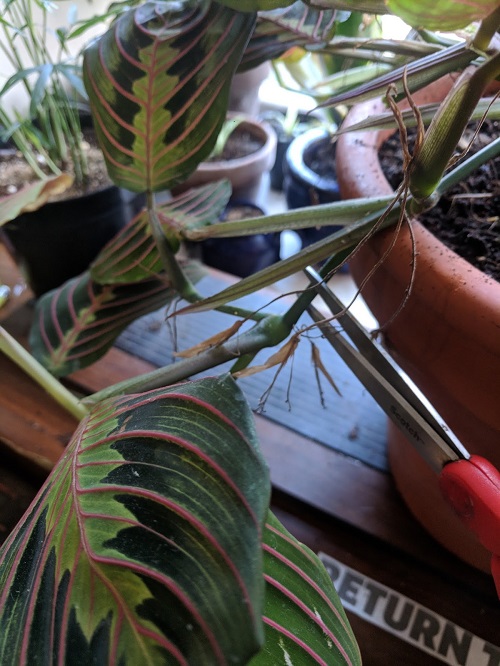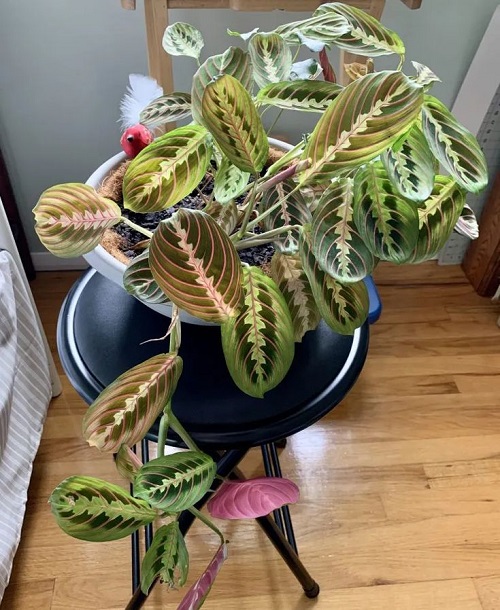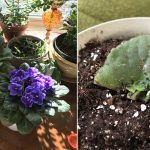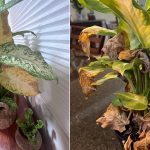Marantas truly stand out with their striking appearance and color variations. Here’s how to make prayer plants fuller and bushier!
One of the most sought-after and exciting houseplants is the prayer plant. Though this plant may be slightly more challenging to take care of than a pothos or a philodendron, here are the best tips for making your prayer plant fuller and bushier.
How To Make Prayer Plants Fuller And Bushier
1) Place them in Bright, Indirect Sunlight
Like most houseplants, prayer plants thrive best in indirect sunlight. They can be seen living best in shady but warm areas. As they naturally grow in rainforests in the wild, where they receive dappled sunlight from high canopies, you must also ensure similar conditions when growing them indoors.
Locate your prayer plant near a north—or east-facing window that is bright but not directly sunny. Don’t keep them in complete shade, as that would hinder their growth and make them leggy. Provide it a minimum of 6 to 8 hours of bright, indirect light during the day.
2) Keep an Eye on Watering
Native to Brazilian rainforests, prayer plants need a proper watering schedule to ensure their soil remains moist but not soggy. Underwatering is the fastest way to a dead plant, and these plants also do not tolerate overwatering or too wet soil. The ideal time to water your prayer plant to ensure perfect, bushy growth is only when the topsoil dries out slightly.
With brighter light during spring and summer, you will probably need to water somewhat more often, around once a week. You must water more at the soil surface than towards the roots, as soggy roots could spell root rot for your plant. Ensure room-temperature water is used and gradually reduce watering to every two or four weeks as winter approaches. During this time, your plant would go dormant and not push out active growth. So, you could use a water meter during winter and check if your plant needs water.
Prayer plants are pretty picky and prefer filtered or distilled water. While watering, avoid getting water on the leaves, as that would be conducive to mold growth. Overwatering or underwatering a prayer plant might show symptoms like curling its leaves and developing yellow or brown leaves.
3) Fertilize Sparsely
During the growing season, which is from early spring to autumn, you should feed the plant every two weeks with a high-quality water-soluble fertilizer with an NPK ratio of 10-15-10. You must fertilize only during the active growing months when the plant produces new growth to achieve that full, bushy appearance.
Avoid fertilizing during the winter months, as this is when your prayer plant is dormant, and no amount of nutrients will make your plant bushy. Too much feeding during the winter months will cause fertilizer burn and create conditions for disease. Also, ensure you dilute the fertilizer according to the manufacturer’s instructions.
4) Repot Every Few Years
While prayer plants would survive quite well in regular potting soil, you do need to go the extra mile if you want a full, bushy prayer plant! Firstly, choose a pot that is the right size and has drainage holes. Then, you must ensure that your soil mix is airy and well-draining.
You can mix your soil with peat moss, loam soil, perlite, and coarse sand. However, do not mix too much perlite, which can cause browning leaves due to fluoride burn. This mix would ensure the slightly acidic nature that plants thrive in, good drainage, and moisture-retentive properties. You can use this soil mix every 1-3 years when repotting your prayer plant.
When repotting, you could add rocks or gravel to the bottom of your pot to improve drainage. Remember, poor soil mix that does not have the optimal pH range of 5.5 to 6.0 is not desirable for prayer plants.
When it comes to repotting, do it when your plant is becoming too root-bound, and choose a pot that is 1 to 2 inches wider than the existing pot. Water your plant after repotting and give it time to acclimatize to the new soil conditions. You must repot, especially if your plant’s roots grow out of the pot’s drainage holes. You will also know it’s time to repot if your plant stops growing or needs constant watering, even when the soil is moist.
5) Prune Strategically
Last but definitely not least, pruning can arguably be termed as the holy grail if you want a full, bushy prayer plant. First, you should get clean, sterilized garden scissors and snip unruly stems just above a leaf node. Your prayer plant will respond by sending out new growth directly below the area you have cut, thus leading to a bushier appearance!
Prune your plant twice or thrice yearly, right before spring and after fall, which would help you leverage the plant’s active growth season. Pruning would also include removing diseased and dead parts of your plant as and when they crop up.
6) Propagating the Cuttings in the Same Pot

Growing cuttings in the same pot as the parent plant can really make your plant look fuller and bushier. By rooting several cuttings around the base, you promote new growth from different areas, filling in gaps and creating a more lush appearance. This works because the new shoots and leaves will sprout from various points, giving the plant a dense, robust look.
7) Keep Away Pests and Diseases
The first sign of spider mites or mealybugs is a white powder or sticky substance on the leaves. You might also see brown discoloration on the foliage. Besides removing them with neem oil solution, a natural insecticide, you could also remove them with a Q-tip soaked in rubbing alcohol. Afterward, mist your plant with insecticidal soap to prevent further infestations.
Pests like the above, including aphids and thrips, not only suck the sap out of your prayer plants but also cause lesions and limit nutrient availability, consequently hindering your plant’s growth. The best solution to most pest infestations is a neem oil solution or rubbing alcohol, as either of these can combat almost all pest infestations.

